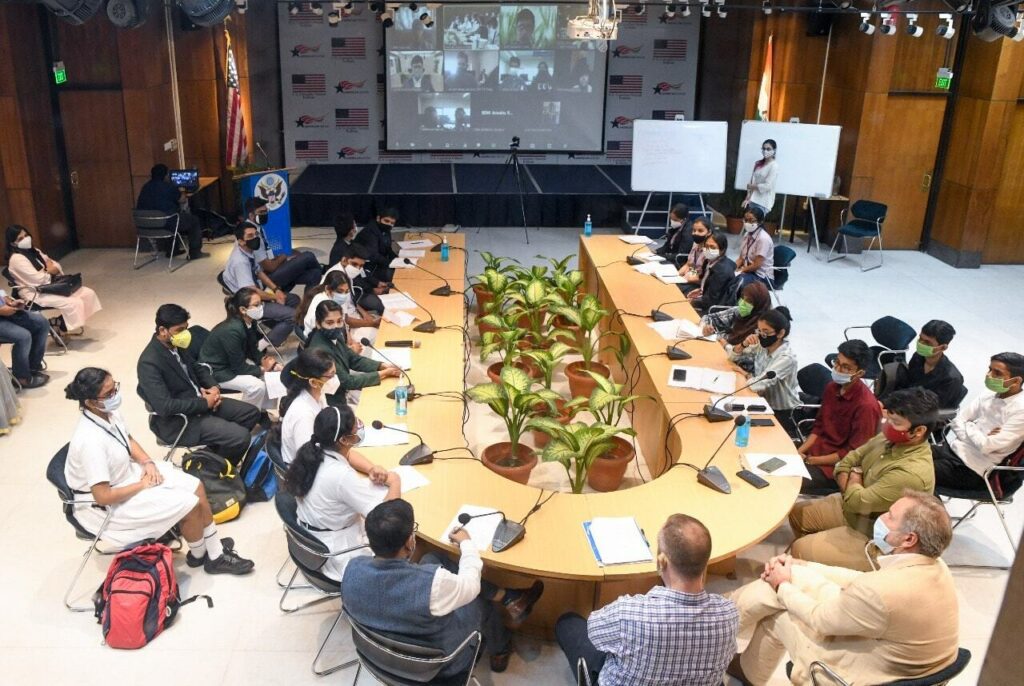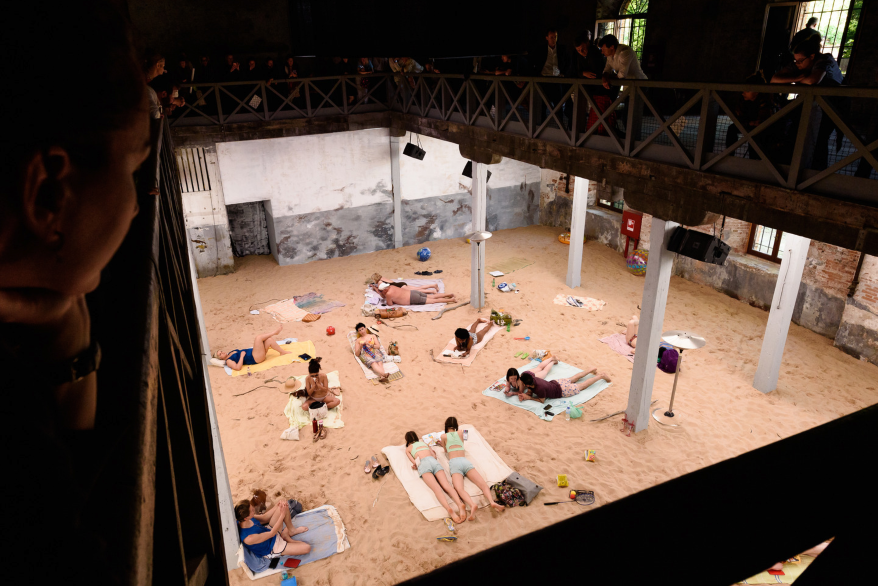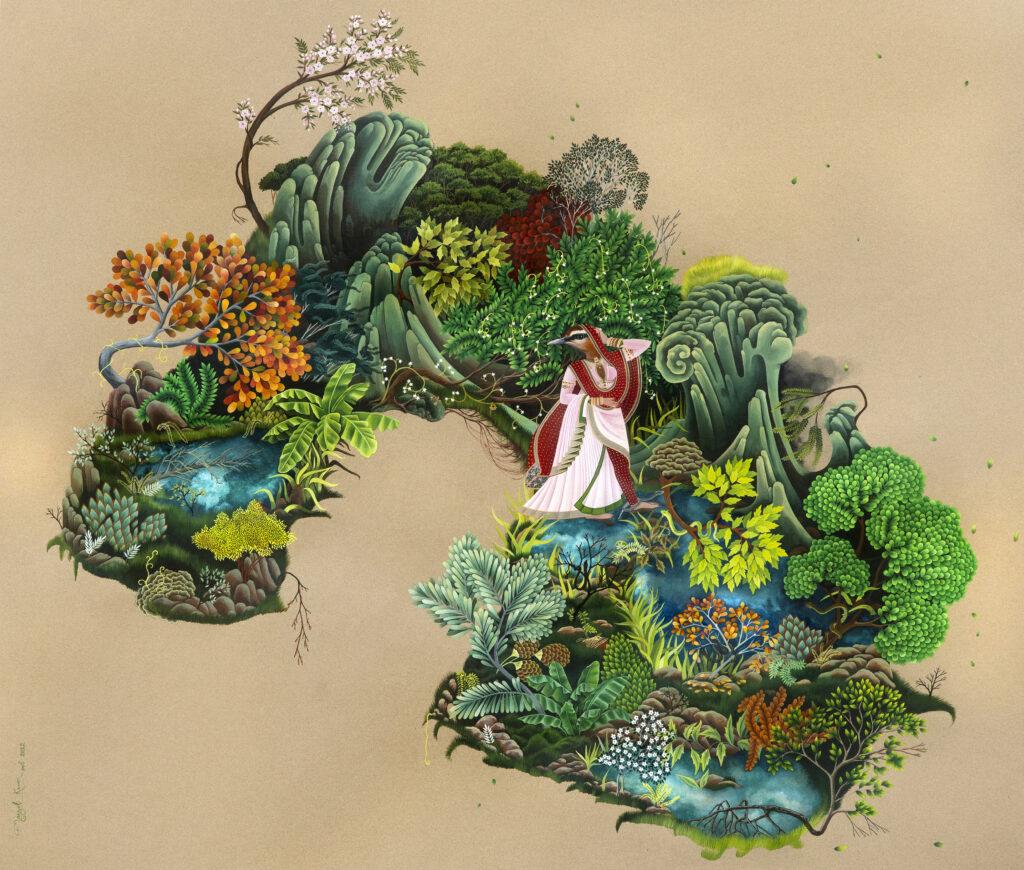Culture in the time of climate crisis
This first edition of Livism in 2023 looks at things a little differently. Climate change already impacts several aspects of our lives – the food we eat, the homes we build and the clothes we wear, to name a few. But the impacts of the climate crisis run much deeper, touching the very core of our cultural heritages passed down over generations. In addition to cultural assets, such as museums, archives, libraries and artefacts, cultural heritage is transmitted through intangible heritage like folklore, storytelling and spirituality, and together these are crucial to the makeup of our cultural identities
At the climate negotiations in Egypt last year, the parties to the UN Climate Convention acknowledged that the climate impacts on cultural heritage play a significant role in how we understand the loss and damage experienced by communities. Also, traditional ecological knowledge and culturally transmitted knowledge will play an important role in how we plan for the future while preserving our past, and will offer a wealth of solutions on how to adapt to changing ecosystems.
In this newsletter, Sukrit Sen shares how climate change is threatening local natural cultural heritage and introduces us to the “Living Waters Museum”. We hear about the changes to culturally significant landscapes and biodiversity they are witnessing at the museum and what this means for working with natural cultural heritage and climate activism.
Curator Lucia Pietroiusti from the Serpentine Gallery in the UK also talks to us about the ways that cultural institutions – as well as being the site of recent climate actions – are at the forefront of bringing people together to find interdisciplinary solutions to the climate crisis and to imagine possible futures.
Happy reading!
From,
The Livism Team
The Living Waters Museum: Understanding the role of intangible heritage in climate action
By Sukrit Sen


© The Living Waters Museum
Sukrit Sen is a Heritage and Disaster Management professional by day and a musician by night. He has been in the field of Indian Classical Music for the last two decades and has performed across the globe. His primary interest lies in tangible and intangible linkages and tries to look at these as a catalyst for heritage conservation in current times.
For those of us who have been paying attention, we see a growing concern over the threat to cultural diversity and heritage in our communities due to climate change. This loss is touching generational cultural assets such as the arts, music, language and history, which help shape a community and bring joy to our lives. There are a wealth of stories, practices and skills which make up the living elements of a community and our cultural lineages. These tapestries of tales, folklores, dances and spiritual practices connect us to each other as well as to the landscapes they emerged from and relate to. This ‘intangible cultural heritage’ makes up the diverse identities across India, and informs practices of sustainable development and well-being within communities.
We also see how the relationships people have with landscape and place are being disrupted by the hazards and disasters brought on by human-induced climate change, which are occurring with greater frequency. Protecting intangible cultural heritage is increasingly challenging due to the impacts people are facing, such as displacement, droughts, floods and the significant rise of threats to Indigenous land rights. We have heard from communities how the loss of oral traditions, languages, other traditions and beliefs is becoming more and more common, leading to the loss of knowledge about biodiversity, traditional medicines and belonging to place.
While awareness about how climate disasters impact cultural heritage and how we need to work on risk reduction has grown, these conversations tend to focus on buildings and leave out the importance of the wider range of relationships that people have with landscapes and other forms of cultural heritage. Traditional communities have been documenting the impacts and lived reality of climate change through songs, hymns and scripts due to the intimate and long-standing relationships they have with the natural environment. These rich traditional forms have recorded through generations the ways people have been measuring climate change and adapting to the risks it has brought over time.
In the current global conversation and policy spaces though, we see that ‘climate change’ is a concept dominated by the scientific community, and this has resulted in a false separation between traditional knowledge about the environment and scientific knowledge. When climate change is seen as an issue only belonging to the scientific community, it becomes a topic isolated from the communities who have been working for years with rich traditions and practices that focus on ecological balance, resilience and climate solutions. There is a need to democratise climate action, and to understand just how vital cultural heritage is to finding solutions to the climate crisis – solutions are embedded in the cultural knowledge and empirical science of our communities.
Realising this inspired me to create the Living Waters Museum. Here we have been working with school children to build their capacity and understanding of the relationship between cultural heritage and climate change, and to find new avenues for creative advocacy and climate action. A great example of this is our project with the rural students of Sundarbans (a sensitive ecosystem in South East Asia, which is increasingly impacted by climate disasters). Together we document and implement their traditional wisdom of mangroves and develop plantation strategies to reduce the risk of future cyclones.
Our work also resonates with urban communities, as we see that everywhere there are cultural traditions and forms that emerge from the relationship between people and place. Through performing arts and exploring the Bhatiyali Genre – a traditional art form of the boatmen of the Indo-Gangetic Delta, we are working with urban students in Kolkata to raise climate awareness and to talk about our fragile futures. Our approach aims not only to uphold and preserve the traditional knowledge systems of the Sundarbans, but also to reach beyond the scientific community to a much larger audience where we can sow the hope that future generations will also get to enjoy our rich cultural legacies.
To learn more about the Living Waters Museum visit the website here.


© The Living Waters Museum
Spotlight on: Lucia Pietroiusti
Lucia Pietroiusti is a curator working with an interest in art, ecology and systems, usually outside of the gallery format. She is curator of General Ecology at the Serpentine Gallery in London, as well as the curator of the touring opera performance Sun & Sea (Marina). She is also one of the curators of the 13th Shanghai Biennale, “Bodies of Water”.


© Thaddäus Salcher
What do you think is the role of the gallery or the museum in developing narratives around climate change and activating people to take action?
Culture is the place where you can try to seed, not only by creating works, but also by listening. You can encourage transformative ways of thinking through what it’s like to be on this planet and moving through it. Whilst it is the responsibility of the sciences and the advocacy fields to have specialisations around the specific issues that we are facing, culture has a function at the level of the space in between those things, the matrix within which things are suspended.
My hope is that culture does the mobilising of people, because individual responsibility is not enough in the face of something like climate breakdown. There’s also systems change that needs to happen. My hope is that the cultural field can actually intervene at all of these levels.
Can you tell us about the General Ecology project at the Serpentine?
The initial instinct was to experiment on a long-term project for an art institution that would help orient its sense of purpose. In times of crisis, an organisation can defend itself and become isolated, worry about image, or it can become more porous to a different sense of purpose important to the present time. I was trying to find strategic ways that an art institution could dedicate itself to environmental justice, without it feeling like it was losing its original mission to show art and culture.
General Ecology asks what the Serpentine is by looking at how it works, how it relates to its environmental footprint, and by asking the right questions through its exhibitions and public programming, radio, online projects and off-site projects.
Do you want to talk about your work Sun & Sea?
Sun & Sea is an opera performance that was conceived by three artists from Lithuania and ended up representing Lithuania at the Venice Biennale. People were so moved when they came out of the performance, to an extent that we couldn’t have imagined, particularly in a cynical context like a Venice art biennale. So you’re looking down at an artificially reconstructed beach scene. Bringing the outdoors indoors, and on the beach are adults, children, dogs, umbrellas, toys, towels.
In every song, there’s an undertone and unconscious sense that the character that you’re listening to is perceiving that there’s a looming big threat, just out of view. And each one of those characters in turns just kind of lets it go, and goes back to thinking about their own daily things. There was a sense we were witnessing a particular piece of the planet which has the possibility of almost perceiving the catastrophe, and then forgetting about it because it’s not on the front lines of that catastrophe.


Lucia Pietroiusti Sun & Sea (Marina), opera-performance by Rugile Barzdziukaite, Vaiva Grainyte, Lina Lapelyte at Biennale Arte 2019, Venice, photo Andrea Avezzu, courtesy of the 58th International Art Exhibition – La Biennale di Venezia
Are there other cultural forms outside the gallery that have potential to also catalyse conversation on climate change?
If we think about food, there are artistic practices that look at the relationship between food and the history of empire and alternative food systems. Also, when you’re building a video game, you have to make decisions about everything, like whether there’s gravity, who you are, how things behave, and so on. You can really promote and seed ideas around symbiosis, mutuality and environmental care and respect.
The gallery has become a stage for direct action in the last few years. How has it changed your work as a curator?
I was struck by how polarising the responses to the actions were, it made me ask myself some interesting questions about this privileged bubble of the museum space and how violent it appeared to some; but I also love art. I remember a headline that quoted George Monbiot saying people are caring more about painted sunflowers than real ones. My instinctive reaction was, that’s assuming there’s a binary between painted sunflowers and real ones. The way that I experience art is that the painted sunflowers get me closer to a sense of sunflowers on the planet, rather than further away from it. Those actions really got me to think more deeply about the ways in which artistic interventions can bring us closer to a sense of being on the Earth, rather than alienating us.


Hybrid Being 3 by Manjot Kaur, gouache and watercolour on paper
This latest work by artist Manjot Kaur invites viewers to reflect on the relationship between humankind and ecology. She asks us to think about how we mourn for what we have lost and what efforts are required to protect biodiversity on the verge of extinction?
“The painting invokes a romantic relationship between a bird – The Jerdon’s Courser & a woman – Abhisarika Nayika. Here, Abhisarika ventures into the forest full of dangers to search for her lover “The Jerdon’s Courser”. The flora & mountains in the painting are twisted in a way as if glancing at her.
The Jerdon’s Courser is a critically endangered nocturnal bird endemic to South India. Abhsarika is a heroine who belongs to the Ashta-Nayika [Natyashastra, India c. 2nd B.C]: a collective term for eight heroines, each of whom represents different states in relationship to her hero. Her face is merged with her lover’s face resulting in a Hybrid Being.
Hybrid Beings propose a queer ecology where the endangered bird becomes the hero, replacing the male figure from the context of Ashta-Nayika. They stitch together improbable collaborations in a multispecies world making way for kinship & responding to ecological grief and loneliness. They push back against the centering of the human as a protagonist & move toward a thinking that eradicates the hierarchy of being. They cultivate the capacity to reimagine a future for the marginalised & silenced (women and biodiversity). They further explore what it means to be human, what it means to be non-human, & where these categories rupture & collide. Hybrid Beings open up possibilities for a post-queer & post-human world where species move away from questions of identity towards an uncanny kind of becoming .”
Manjot Kaur
In case you missed it
The new administration in Brazil is starting work to protect the Amazon from deforestation and uplift Indigenous rights.
Looking for some inspiration for how to bring the fight for climate justice to your dinner table? Check out this beautiful collaboration between Atmos and Dallas Goldtooth.
Learn more about the connections between climate justice and police violence, colonial violence and the climate crisis.
Want to have your finger on the pulse with the latest conversations taking place in contemporary art and ecology? Sign up for Impact Art News.
After years of campaigning by climate campaigners, artists and labour unions, the Royal Opera House ended its sponsorship relationship with British Petroleum (BP) after 33 years.
Think there’s too much info out there on the climate crisis? Think again! A recent study in the US found that between 2016 and 2020 only a measly 2.8% of TV shows and films mentioned climate issues.
Do you have a great idea for a climate TV show? Learn more about writing climate content for the screen.
It’s Not Just You is coming soon, the debut book from climate justice activist Tori Tsui exploring the intersections between climate change and mental health from a climate justice-oriented perspective.
What will it take for the football community to reach its climate goals, and is it serious about reaching them? The Guardian takes a look.
Recommendations
What we’re watching on TV
Reservation Dogs follows the lives of four Indigenous youth and weaves in subtle messages about the Land Back movement and climate justice. The show has been collecting awards left right and centre – don’t miss it!
What we’re playing
Sometimes the climate crisis can be overwhelming and we want to hide more than ever in distractions. What if we could do both – retreat into our imaginations, have some fun and tackle the climate crisis? Check out these games that are helping us do just that!
What we’re reading
We have been absorbed in Fen, Bog and Swamp: A Short History of Peatland Destruction and Its Role in the Climate Crisis by Annie Proulx.
What we’re listening to
In her latest album, violinist Eldbjørg Hemsing is translating the fragility of the Arctic into music.







